-
Rebuilding Seattle's viaduct will not result in nightmare commutes
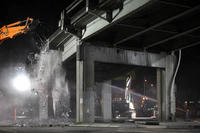
Debate about how to replace Seattle’s deteriorating waterfront highway has centered on uncertainties in the project’s price tag; drilling a deep-bore tunnel and building an underground highway is estimated to cost around $4 billion, but some worry the final price could be higher, as it was for Boston’s infamous Big Dig; University of Washington statisticians have, for the first time, explored a different subject of uncertainty, namely: how much commuters might benefit from the project
-
-
Informed response to threat of asteroid collision
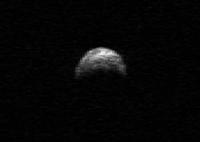
Surveys using ground and space-based telescopes, such as the NASA Spaceguard, have identified many Near Earth Objects (NEOs) that pass close to the Earth, including the 400 meter asteroid 2005 YU55 which will approach to within 325,000 km of the Earth in November this year; early detection of NEOs, and determination which of them is more threatening to Earth, are essential for decisionmakers; Southampton University researchers developed a new software system that could support decisions on how to respond to potential NEO impacts on Earth
-
-
Turkey plans two earthquake resistant cities to move residents from vulnerable Istanbul
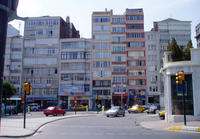
To encourage residents to move away from seismically unsafe neighborhoods, Turkey’s government recently announced that it will begin building two earthquake-resistant developments near Istanbul; the city of more than twelve million people currently sits near a major fault-line that could potentially kill thousands in the event of a major earthquake; engineers and seismic experts warn that Istanbul’s poor construction, shoddy city planning, and overcrowding would result in many fatalities in the event of an earthquake; officials plan for the new urban centers to be home to roughly 1 million residents each; any move to the new settlements would be entirely voluntary
-
-
Direct removal of carbon dioxide from air infeasible
A group of experts looked at technologies known as Direct Air Capture, or DAC, which would involve using chemicals to absorb carbon dioxide from the open air, concentrating the carbon dioxide, and then storing it safely underground; they conclude that these technologies are unlikely to offer an economically feasible way to slow human-driven climate change for several decades
-
-
New technology quickly detects bioattacks on water supply systems
If pathogens enter into a city water supply network, many people may fall ill quickly; to protect against this biological threat, researchers have developed a detection system, partly based on nanotechnology, that can warn authorities in time
-
-
Missouri levee blast floods 130,000 acres, but saves Illinois city
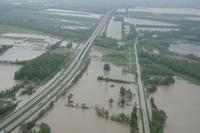
On Tuesday, the U.S. Army Corps of Engineers blasted a section of a levee along the Mississippi River to create a controlled breach that would relieve pressure and prevent the town of Cairo, Illinois from becoming engulfed in record flood levels; the blast created a gap more than 10,000 feet wide at Birds Point, Missouri levees and inundated more than 130,000 acres of farmland; heavy rains have left the Mississippi and Ohio Rivers swollen, putting Cairo and its 3,000 residents at great risk as it sits on a narrow stretch of land between the two surging rivers; on Monday, the Corps received permission from the federal government to go ahead with its plan, despite Missouri’s protests
-
-
What past rises of sea levels tell us about future rises
During a period of high atmospheric carbon dioxide levels three million years ago — the mid-Pliocene climate optimum — sea levels were anywhere between 15 and 100 feet higher than at present because water that is now locked up in glaciers as ice circulated freely through the oceans; by understanding the extent of sea level rise three million years ago, scientists hope more accurately to predict just how high the seas will rise in the coming decades and centuries due to global warming
-
-
Sector Report for Monday, 2 May 2011: Infrastructure protection
This report contains the following stories.
Plus 1 additional story.
-
-
California school building regulators had ties with anti-regulation lobby group
A California watchdog group recently revealed that state officials in charge of enforcing earthquake standards for school buildings have had a long and questionable relationship with a lobbying group that actively works to oppose building safety regulations in public schools; senior officials with the Division of the State Architect had been dues paying members of the Coalition for Adequate School Housing, which actively lobbies for less regulation on school construction; in 1997, state regulators were told that taxpayers would reimburse their membership dues to be a part of the lobbying group; officials maintain that there has been no corruption; in 2010 a major regulatory provision in place since 1933 was removed
-
-
New guide explains perimeter protection options
A new guide explains the subject of perimeter protection clearly and concisely to enable specifiers, facilities managers, security managers, and consultants to identify the optimum security measures for particular premises and threats; it covers not only high-security fencing, barriers, and gates, but also electric pulse systems and associated security measures such as access controls, CCTV, and intrusion detection systems
-
-
PG&E send safety information to customers living near gas pipelines
PG&E begins notifying customers of gas transmission pipeline locations and highlights actions the company is taking to make natural gas transmission lines safer; the letter safety brochures is being to 2.5 million homeowners and businesses located within about 2,000 feet of a natural gas transmission pipeline
-
-
Recycled concrete saves money
Purdue University civil engineers are working with the Indiana Department of Transportation to perfect the use of recycled concrete for highway construction, a strategy that could reduce material costs by as much as 20 percent; “If you are going to pave, you may have to remove the old concrete and break it into pieces anyway, so recycling makes sense,” one of the researchers says
-
-
Wyoming braces for spring floods
The Wyoming Office of Homeland Security is readying local and state agencies for projected spring floods and is urging local residents to prepare themselves as well; this year large snow packs from heavy winter storms have increased the likelihood of flooding; state officials are encouraging families to keep a three-day emergency kit loaded with food, water, clothing, flashlights, medicine, and important documents; last year floods hit Wyoming causing major disruptions, particularly in Fremont County; this year state officials hope to minimize the impact of floods with early preparation
-
-
Cooling pools or dry casks for nuclear waste: which is safer
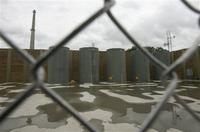
There are two ways to store nuclear waste: in pools of water, where the densely packed uranium rods are cooled by a constant flow of circulating water, or in dry casks — typically barrel-shaped steel-and-concrete structures that stand twenty feet high and sit outdoors — where the uranium loosely packed rods are cooled by passive air; there are 65,000 tons of nuclear waste in the United States, more than in any other nation, and this amount grows by about 2,200 tons each year; the Fukushima disaster demonstrated that dry casks were able to withstand the 11 March combination of earthquake and tsunami much better than cooling pools; the U.S. Nuclear Regulatory Commission must now decide whether cooling pools are safe enough to store nuclear waste, and even whether densely packing nuclear waste is safe
-
-
Chernobyl radiation did not damage abundance, diversity of aquatic life
A new study of the lakes in and around Chernobyl’s fallout zone reveals that radiation from the nuclear accident appears to have had no long term effect on the abundance or diversity of aquatic animal life; no evidence was found that the abundance or diversity of the animal communities was influenced by direct contamination from the Chernobyl accident; indeed, the most contaminated lake, Glubokoye, 6.5 km north of the nuclear power plant, supported the most animal diversity of those lakes studied
-
More headlines
The long view
Falling Space Debris: How High Is the Risk I'll Get Hit?
By Zulfikar Abbany, Julia Vergin, and Katja Sterzik
An International Space Station battery fell back to Earth and, luckily, splashed down harmlessly in the Atlantic. Should we have worried? Space debris reenters our atmosphere every week.
Using Drone Swarms to Fight Forest Fires
Forest fires are becoming increasingly catastrophic across the world, accelerated by climate change. Researchers are using multiple swarms of drones to tackle natural disasters like forest fires.
